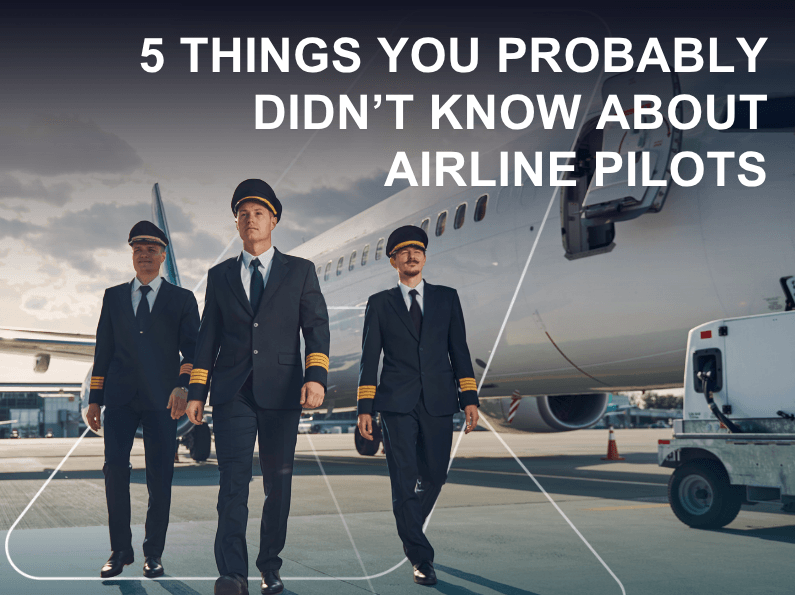5 Surprising Things You Probably Didn’t Know About Airline Pilots

When you think “airline pilot,” it’s easy to imagine polished uniforms, confident strides through terminals, and flawless teamwork. But behind the scenes, there are some fascinating truths that few people ever see. Here are five lesser-known facts about airline pilots that even aviation enthusiasts may find surprising:
1. The Captain & First Officer aren’t a fixed “duo”
Many people assume that the Captain and First Officer always fly together, forming a tight-knit pair over time. In reality, airlines operate on large scales, with fleets numbering in the hundreds, crew rosters in the thousands, and flights scheduled around the clock. Because of that, it’s quite common for you to fly with someone you’ve never met before.
This is precisely why standardized procedures, clear communication, and strict protocols are vital. Regardless of how well (or not) the crew know each other beforehand, the system ensures every flight operates safely, consistently, and predictably.
2. Pilots can’t eat the same meal on the same flight
This rule might sound odd, but it’s rooted in safety. On many flights, the in-flight catering team offers a few meal choices. Importantly: the Captain and the First Officer are not allowed to select the same meal.
Why? If one meal were contaminated, only one pilot would be affected. The other pilot could remain fully capable of operating the flight and executing a safe landing. It’s a simple but critical safeguard.
3. Occasional turbulence and challenge keep you sharp
As cliché as it sounds, “a calm sea never made a skilled sailor” holds true in aviation too. While smooth flights are comfortable, occasional weather, crosswinds, and busy approaches actually help pilots maintain and hone their skills.
That said, safety always comes first. If conditions exceed predetermined limits (for example, crosswind limits), the standard response is to execute a go-around or divert, not push through danger.
4. Pilots are masters of small talk
Believe it or not, pilots frequently find themselves with quiet hours mid-flight, especially during cruise, when the workload drops significantly. But instead of sitting in silence, many choose to chat informally with their co-pilot.
So yes, many pilots become naturally good at striking up conversation, keeping things congenial (but professional). It helps build rapport on flights where you may never have met before.
5. First Officers are pilots: promotion comes with experience
It’s a common misconception that First Officers (“co-pilots”) merely “assist” the Captain. In fact, both roles are fully trained pilots. The difference lies primarily in rank, experience, and decision authority.
Over time, a First Officer may be promoted to Captain once they meet certain experience and performance thresholds. Meanwhile, in many airlines, roles like “Pilot Flying” and “Pilot Monitoring” rotate, which means First Officers often get to fly a significant portion of flights, sometimes even more than Captains on a given day.
✈️ Connecting Pilots with Opportunities That Elevate Careers
At MHC Aviation, we work closely with global airlines and operators to recruit and place experienced Captains and First Officers in roles that offer strong career progression, professional development, and long-term stability. Our recruitment and crew support teams ensure that every pilot we place joins a company where they can grow, both in the cockpit and beyond.
Whether you’re a seasoned Captain seeking your next challenge or a First Officer ready to advance, MHC Aviation helps you take that next step confidently.
